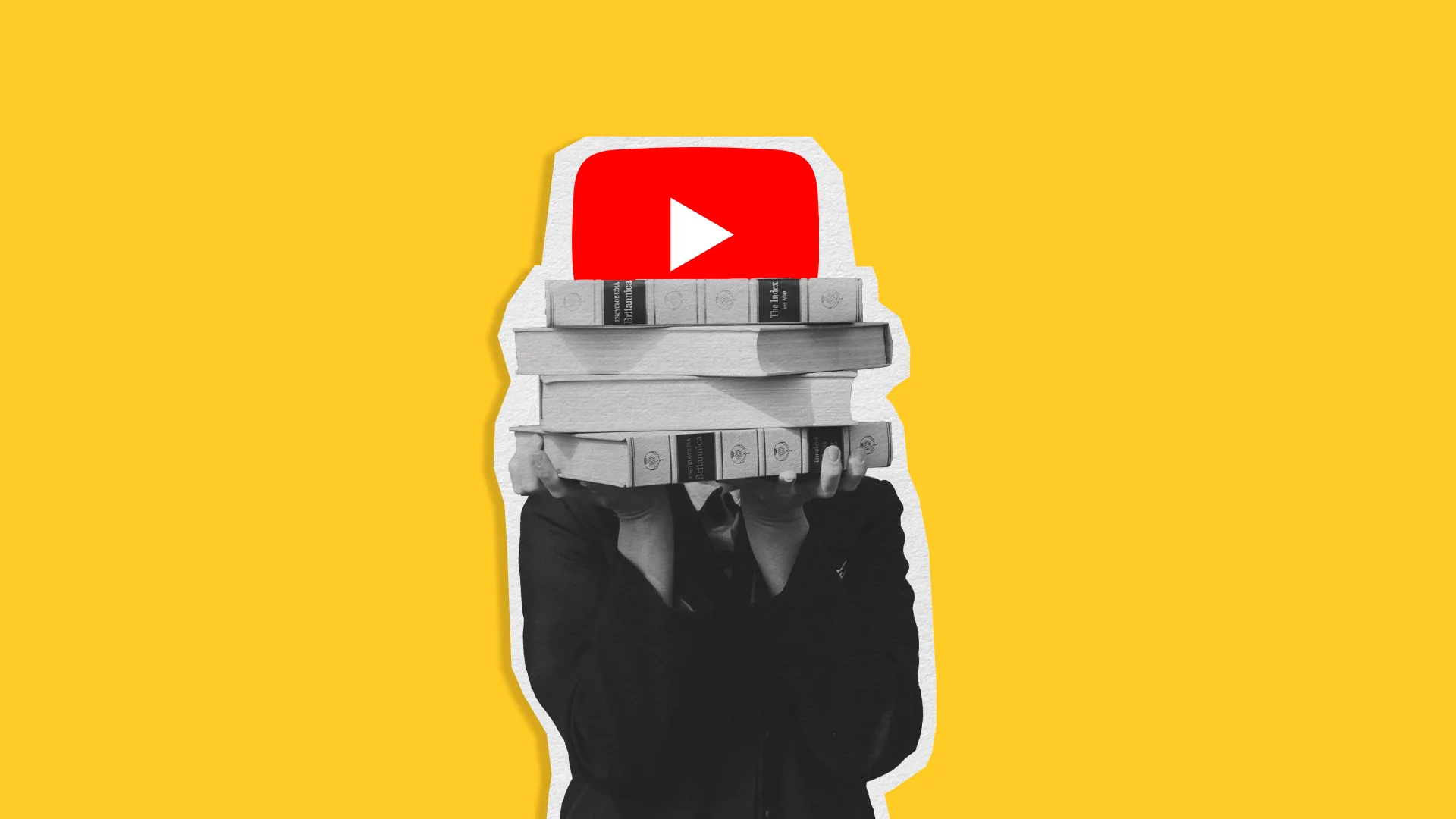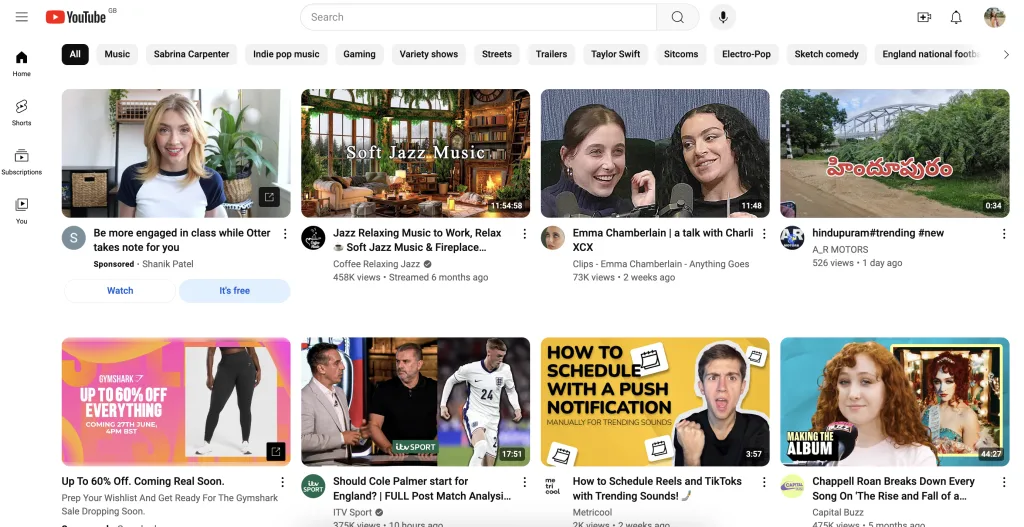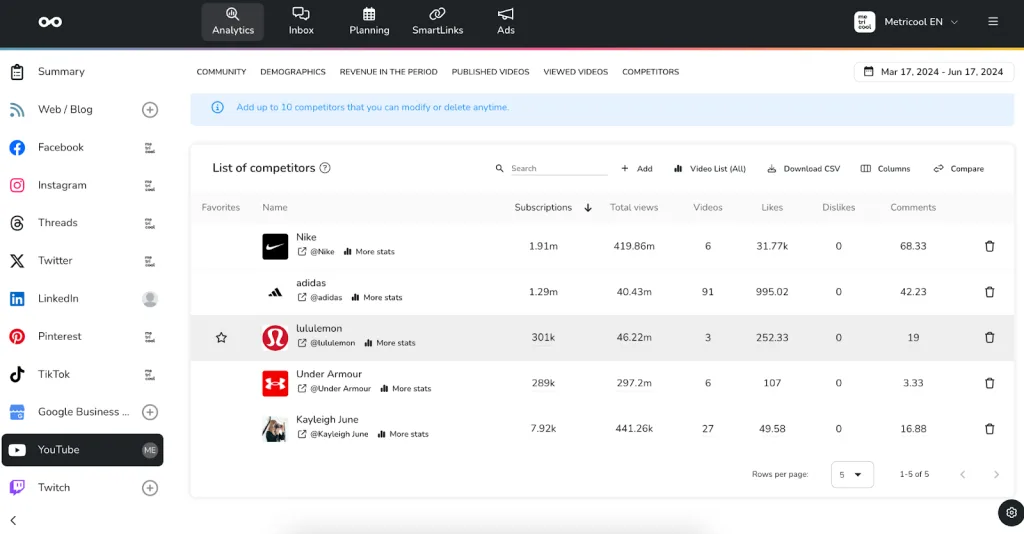How to Improve SEO on YouTube to Optimize for Search

If you want to position your videos on YouTube to reach the right audiences, focusing on SEO will help boost your content and make your brand more visible across social media.
With YouTube being the second largest search engine behind Google, even small changes can result in significant wins, such as increased video views, channel visits, and business growth.
Marketers and business owners have capitalized on SEO and found ways to increase the ranking of their websites in search results. But, how can you do this?
Keep reading to learn how to optimize SEO on YouTube!
What is YouTube SEO?
SEO, Search Engine Optimization, refers to the organic positioning of your website, account, etc, based on what users search for across the internet. When entering the platform, SEO goes to work displaying videos closely related to your searches, interests, and history:

Appearing in the first results of YouTube is massive for promoting your brand or business, and is worth the small investment. This is an inbound marketing strategy, with the goal of attracting users to your brand through relevant content and resources.
Just like any other search engine, Google, TikTok… YouTube’s algorithm works to curate personalized content for each user. It also works to deliver solution-based content to questions that users search for.
YouTube also positions content that is engaging, meaning that viewers stay until the end of the video and interact with the content via liking, commenting, or subscribing to a channel.
By focusing on SEO, your videos are more likely to end up on interested users’ accounts that have searched for or engaged with content related to your brand or business’s solutions.
Which YouTube sections are we referring to? The homepage, search result page, suggested videos, trends page, subscription feed, and YouTube Shorts are all included in the algorithm backend. Not to mention that optimization can also lead to rankings on Google’s search results.
Benefits of Optimizing YouTube Videos
You may wonder if optimizing your YouTube profile and content is worth it. No matter if you are one year, or 10, into your YouTube endeavors, adding simple optimization strategies can make a world difference and help target the right audience.
Optimizing your YouTube video for SEO can:
- Improve your positioning and rankings in YouTube and Google search results for increased visibility and brand discovery.
- Build a comprehensive YouTube SEO strategy based on your content and channel results.
- Find keywords that align with your target audience, so that when users search the platform, your content will appear.
- Gain authority by becoming a reference for potential customers.
- Win customers and convert quality leads, with trustworthy and authentic content.
By understanding the foundations of YouTube SEO, and the tactics that go into optimizing your videos, you can build a comprehensive strategy and continue to evaluate your progress.
If you haven’t developed a YouTube marketing strategy, you’re limiting yourself to ample opportunities for your brand to be identified by key players.
To help build your strategy, follow this YouTube marketing guide that will help build the structure of your channel’s content, related to the business goals you want to achieve.
8 Essential YouTube SEO Tips in 2024
Here comes the part you’ve been waiting for, the actual tips and strategies you can use to boost your YouTube SEO! Before we dive into it, what factors determine how YouTube ranks videos? The algorithm is based on a few different factors, including:
- Video Title
- Video Description
- Average Watch Time
- Click-Through-Rate (CTR)
- Video views, likes, and comments.
- User search history
These are just a few of the factors that determine the relevance of videos and where they are positioned. Although there are multiple determinants, focusing on these factors can significantly increase your SEO.
The YouTube algorithm is about keeping users engaged while prioritizing quality content to level the playing field. Without conducting the research, and designing a plan that is related to your target audience, you cannot achieve algorithm wins.
This leads us to the first tip, understanding your target audience to track what they are searching for, and want to see.
Understanding your Target Audience
First things first, you need to know who you are targeting. SEO’s objective is positioning your videos, websites, etc. on the feed of users searching for topics related to your brand.
Understanding the questions and issues your target audience asks can provide insights into what solutions they seek, to answer their needs.
When building your target audience, ask yourself these questions:
- What industry does your target audience work in?
- What is your target audience seeking? What issues are they experiencing?
- Where can you find your target audience? What platforms do they use?
- What inspires your audience? What motivates them to make a purchase?
- Where does your target audience live?
After answering these questions, you can create content that fits these answers. We recommend building a YouTube content strategy to organize the days, topics, and processes of how you will stay active on this platform.
Keyword Research and Implementation
Keywords are SEO’s best friend. But how do you know which ones to use? And how many? Thankfully, there are many easy and free keyword tools that you can use to conduct research and understand what topics are trending.
Sites like Keyword.io, Answer The Public, and Semrush, are all tools that allow you to view keyword volumes, trends, and competition.
Volume refers to how many people are searching this term monthly, the trend shows how the monthly search volume has changed, and competition shows how many advertisers are betting on the keyword.
By taking the problems and issues your audience is facing, you can use keywords that include the solution. Then, you can sprinkle these in your video title, description, thumbnail, and hashtags, so YouTube can detect your content and position it on user feeds that are searching for related content.
Optimizing your Channel
Another part of SEO on YouTube is to ensure your channel information is accurate and clearly describes your business or brand.
First, the name of your channel should be the same as your brand or business name. Your account should also have a quality profile picture, either of your brand logo or professional headshot.
You can also categorize your videos, under “Advanced Settings”. With this, you can group similar content into different categories. This is just another way to organize and professionalize your channel.
Cross-Promote Video Content
If your business is active on YouTube, chances are you have followers across other social networks. Include links to other videos, add links to your blog, and in other social media posts, you get the point.
This will help drive traffic to your videos, outside of YouTube. Think of these videos as resources, that you can share with your audience. If you host live webinars, leave links in the comments section. If you receive emails or messages from customers, direct them to a tutorial or explanatory video.
As you can see, the options with this are endless and there is no harm in reusing this link.
Design Engaging Thumbnails
Creating a captivating thumbnail is essential since this is the first thing that users see. Make sure to include the most important keyword in the thumbnail, so your video can rank well.
Although YouTube can generate a thumbnail for you, creating a custom thumbnail will help you stand out and let your brand resonate with your audience.
When it comes to the technical part, the best rule of thumb is to upload an image that’s:
- 1280 x 720 pixels
- 16:9 ratio
- Less than 2 MB
- In formats: .jpeg, .png, .gif, or .bmp.
Here’s an example of a custom thumbnail that presents the topic, and has an enticing graphical element:
Use YouTube Cards
To encourage users to continue watching multiple videos, use YouTube cards to drive channel engagement.
What are YouTube cards?
YouTube Cards are interactive parts of a YouTube video that you will see in many creator’s videos. These cards are usually placed at the end of the video but can be placed at any time throughout the video as well. YouTube allows up to 5 cards per video.
Learn how to use them effectively, here:
Advertise on YouTube
Advertising on YouTube has the potential to reach 2.56 billion users around the world. By creating YouTube advertising campaigns, you can reach users on Google and YouTube search engines, placing your brand on the world’s largest networks.
Create objectives aligned with your YouTube goals to measure your results. With Metricool, advertise a video using Google’s Partner Networks to appear in multiple place at once. Our ads platform makes it simple to create Meta and Google ads.
To learn more about getting started with advertising on YouTube, follow this guide:
Publish YouTube Shorts
YouTube Shorts is the channel’s short-form video content, which is the #1 short-form video platform for brand and product discovery.
By publishing videos to this feed, not only will you increase engagement, more users will discover your brand’s channel. Consider repurposing your Reels and TikToks to triple visibility.
Analyze your Content
Of course, the most important step is to analyze your video metrics to understand what is working well, and what aspects need improvement. For example, here are some of the most important metrics to look at:
- Video views
- Watch time
- Average viewing time
- Likes/Dislikes
- Comments
- Shares
Watch time and average watch time are huge indicators of how engaging your content is. The longer the average viewing time, the more engaging. You can view these analytics inside YouTube Studio, the network’s native analytics tool.
Analyzing your YouTube channel allows you to deep dive into what has worked well for your audience, and which opportunities you should capitalize on. While YouTube Studio is a comprehensive analytics and marketing tool for YouTube, you can use Metricool to analyze your channel whilst managing your other social media platforms.
Stay focused in one working space, with Metricool. Schedule YouTube videos and Shorts, respond to comments, analyze competitors, create link-in-bio pages, and run advertising campaigns. A complete tool, without the expert knowledge needed.


